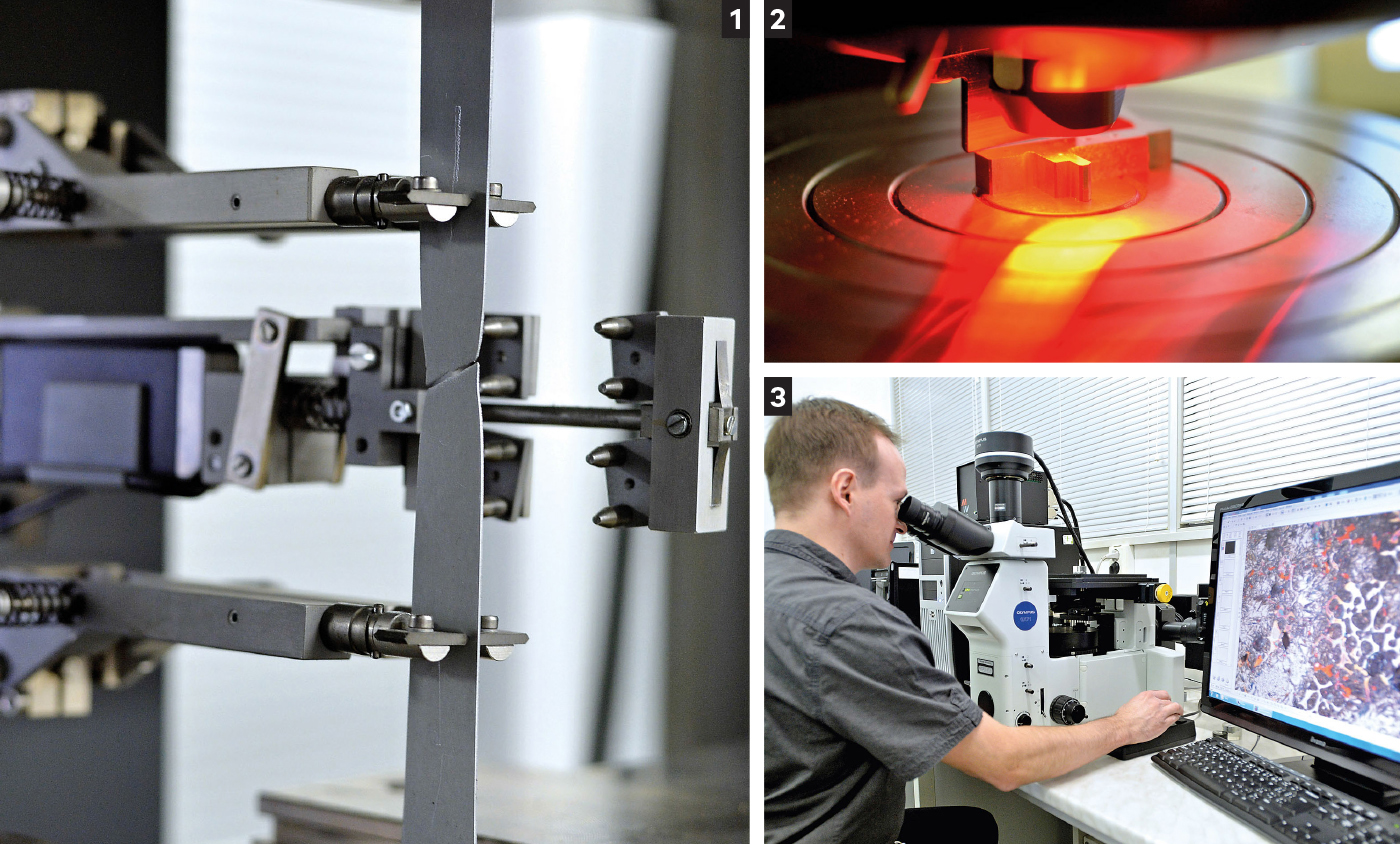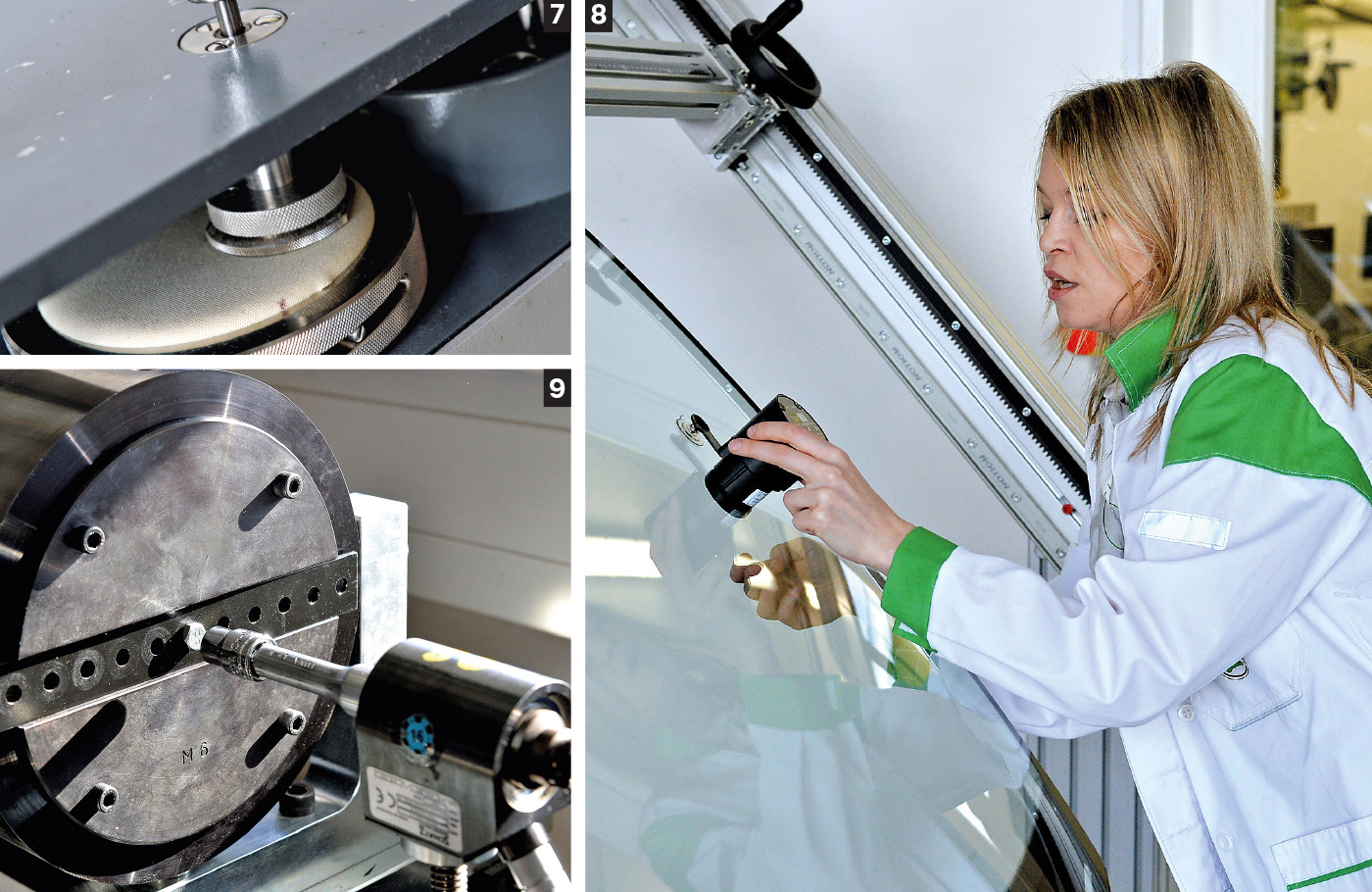4
Like me, you might expect to see test tubes, pipettes and flasks. These are today passé when it comes to determining chemical composition. The instruments and their measurements are in the leading roles nowadays. To illustrate, we tested steel from a gearbox shaft. The machine began recording how electrons are leaping from the atoms, and, by selecting a typical wavelength, it provided us information about the representation of chemical elements in the analysed steel sample.
5
Finally, something I recognize… This must be the laundry room. There’s a tub, washing machines, a sink… Actually, it’s the corrosion chamber, and instead of clothing, car components are being washed here in water or salt mist. This simulation tests the components’ surface resistance.
6
After going through the cold shower, as it were, I needed to warm up again. Where better to do so than in the emission chamber, where emitted substances are measured at 23 °C and 65 °C? In the end, an OCTAVIA was heated by infrared rays to an elevated temperature for five hours.




























